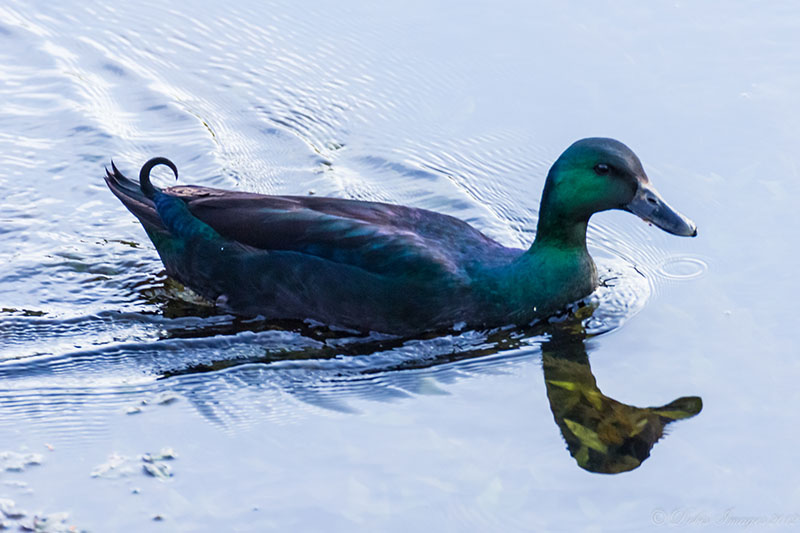Cayuga Ducks
 The Cayuga originates from New York, United States and is named after Lake Cayuga
in the western part of the state. The Cayuga was developed between the 1830’s-1850’s.
It was recognized by the APA in 1874 then by Great Britain in 1907.
The Cayuga originates from New York, United States and is named after Lake Cayuga
in the western part of the state. The Cayuga was developed between the 1830’s-1850’s.
It was recognized by the APA in 1874 then by Great Britain in 1907.
Characteristics
The Cayuga was developed from a wild black duck, the Black East India, and the Rouen. It has black plumage with a beetle green sheen. The legs and beak are black. They carry themselves upright with a long neck. The Cayuga is considered easy-to-handle and very hardy. They adapt to cold weather. The do well as free-range. They are considered good egg layers, laying up to 100-150 eggs per year.
Standard Weights
Drake: 8 lbs
Duck: 7 lbs
Young Duck: 6 lbs
Varieties
Black
Uses
The Cayuga is used for meat, eggs and ornamental purposes.
References
All Breeds of Poultry, Origin: History: Description, Mating and Characteristics, by Frank L. Platt. Published by AMERICAN POULTRY JOURNAL, Chicago, Illinois.
"Cayuga Duck." The Livestock Conservancy. The Livestock Conservancy, n.d. Web. 13 July 2015.
Ives, Paul Pomeroy, 1877-. Domestic Geese And Ducks. New York: Orange Judd publishing company, inc., 1951.
Johnson, Sibylle. "Cayuga Ducks." Beauty Of Birds. Avianweb, n.d. Web. 13 July 2015.
Roberts, Victoria. British Poultry Standards (6th Edition). Hoboken, NJ, USA: Wiley-Blackwell, 2009. ProQuest ebrary. Web. 13 July 2015.
